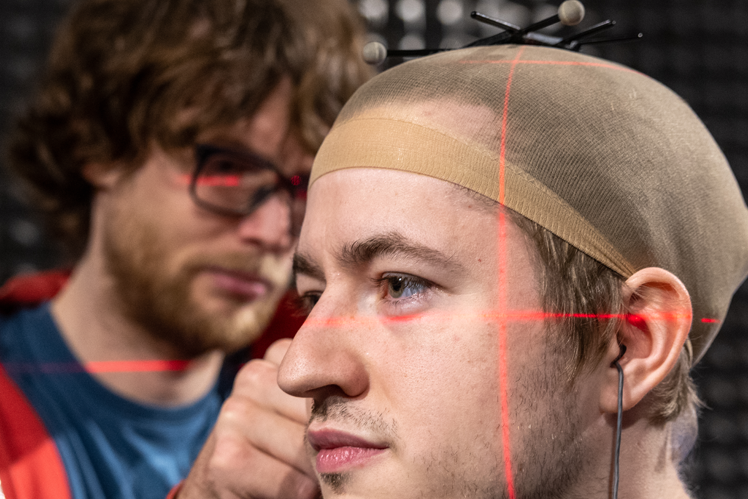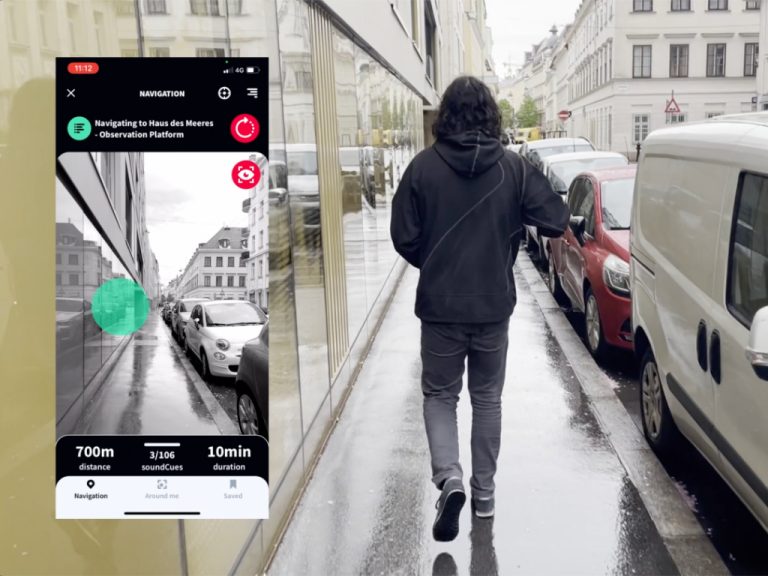Dreamwaves: intuitive navigation using your ears (and your phone)
Finding your way through town, even if it’s your own, can be a hassle.
We’ve all been there: you leave the subway station, already a bit late for your dentist appointment, and you turn and turn your phone, trying to understand in which direction to take your first steps. You try different options, waiting for the arrow to start moving in the right direction, perhaps dancing a little involuntary conga on the platform. All very amusing, if it weren’t for that aching tooth of yours. If only the dentist could lean out of the window and shout your name – “Hey, over here! Come this way!” – that would surely help.
But why is this experience so common? It turns out that reading a map is not intuitive, but a skill that needs to be learned. Some of us do it better, others worse. GPS systems help but don’t always work seamlessly. Sometimes they can’t immediately recognize our exact location, or they don’t show it clearly enough to scale. To complicate things further, when we are nervous, our cognitive system feels overloaded and tends to work worse: easy tasks suddenly seem harder.
An intuitive signal – something that your brain doesn’t need to actively process to make sense of it – is the ideal solution for navigation. Just like the dentist shouting your name out of the window.
This notion is at the very core of Dreamwaves. We aim to challenge the way we navigate by guiding you through a series of 3D sound cues, as opposed to a visual map. Imagine making your way to your destination and, instead of constantly checking your location on your phone, simply following a series of sounds that guide you along the way. You hear them through your headphones as if they’re coming from where you need to go next. All loud and clear. No more hesitant congas. You hear it, you walk to it. Point after point until you reach your destination.
This accuracy, plus the unique audio experience of our app, gave us an idea: did our work have the potential to help blind and visually impaired people navigate the world? The possibility of empowering people by offering them more freedom of movement was thrilling. Thus, together with visually impaired users, we are improving our app to adapt it to their specific challenges and needs.
Our involvement in SONICOM allows us to refine our 3D audio navigation technology by integrating cutting-edge spatial audio research and AI-driven sound processing. This collaboration helps us enhance accuracy, improve user experience, and develop more intuitive and inclusive navigation solutions.
This is our 3D audio navigation journey. Visit our website to find out more about how we intend to make navigation easier for all, getting you to your destination using your ears (and your phone).






